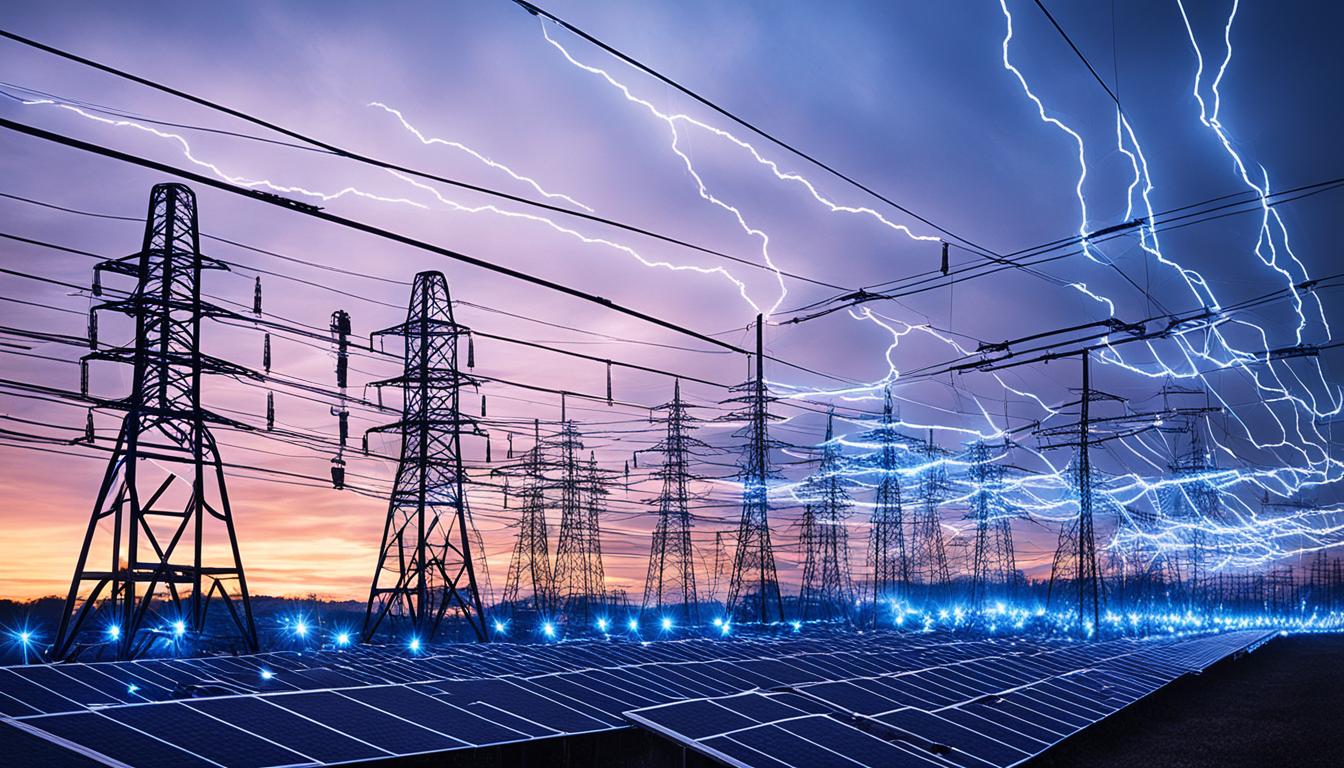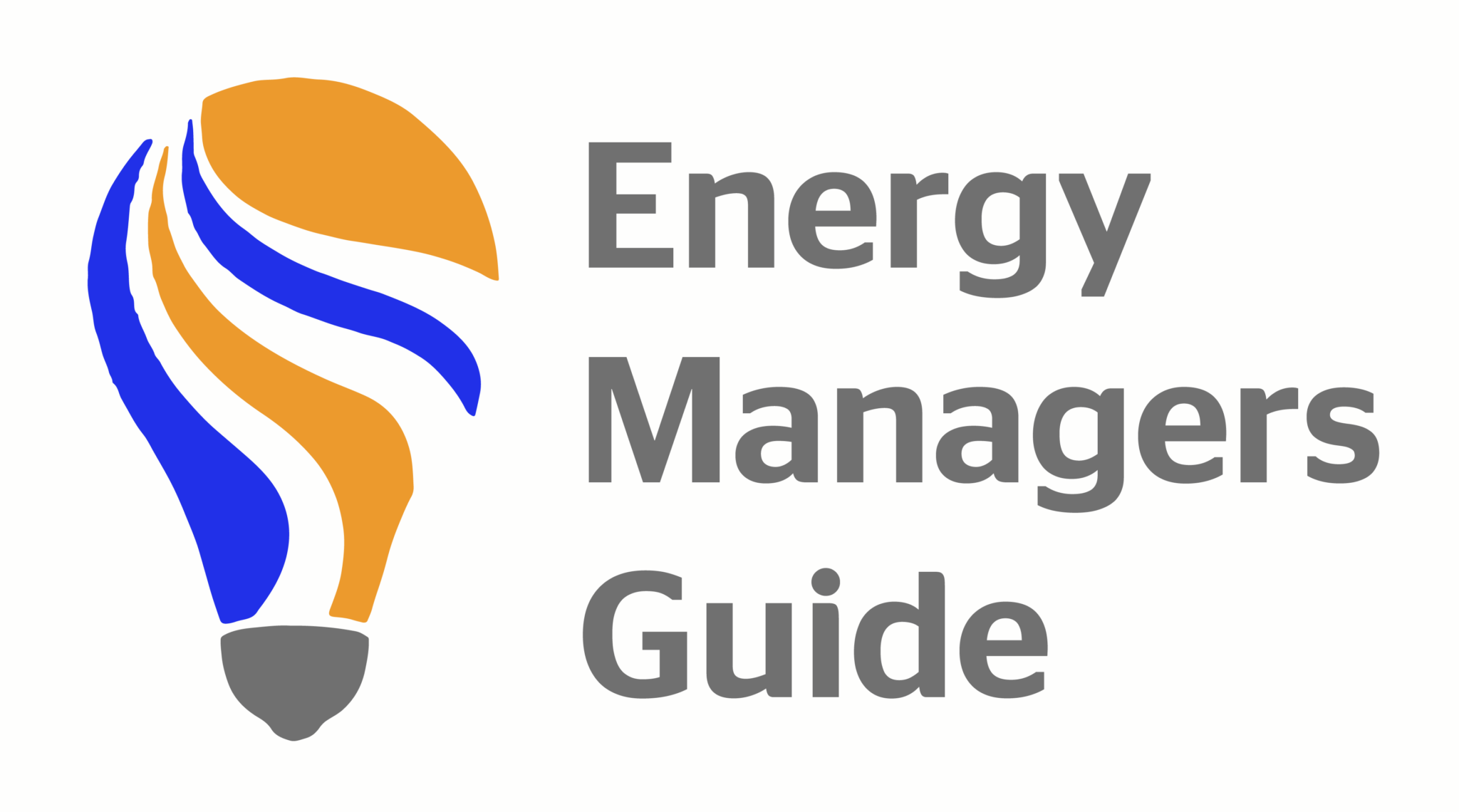Did you know that by 2040, the global energy consumption is expected to increase by a staggering 56%? As our demand for energy continues to rise, it’s imperative to find sustainable and efficient solutions to power our world. This is where Smart Grid technology comes into play, revolutionizing the energy sector and paving the way for a greener future.
Smart Grid technology encompasses a suite of innovative solutions that leverage advanced digital technologies to transform the traditional electricity grid into an intelligent and interconnected network. By integrating smart devices, sensors, and communication systems, Smart Grids enable real-time monitoring, analysis, and control of energy distribution and consumption.
Key Takeaways:
- By 2040, global energy consumption is expected to increase by 56%.
- Smart Grid technology revolutionizes the energy sector.
- Smart Grids leverage advanced digital technologies for real-time monitoring and control.
Enhancing Energy Efficiency and Renewable Energy Integration
Smart Grid technology offers a multitude of benefits in the energy sector, including the enhancement of energy efficiency and the seamless integration of renewable energy sources. By leveraging advanced metering infrastructure (AMI) and energy management systems, Smart Grids optimize energy usage and facilitate the integration of clean, sustainable energy into the grid.
Advanced Metering Infrastructure (AMI) plays a crucial role in monitoring and controlling energy consumption. With the deployment of smart meters, consumers gain real-time visibility into their energy usage. This empowers them to make informed decisions, conserve energy, and reduce wastage. AMI also enables utilities to gather valuable data on energy demand patterns, which can be used to develop more efficient energy distribution strategies.
Energy Management Systems (EMS) provide intelligent control and automation capabilities that further contribute to energy efficiency and renewable energy integration. These systems analyze energy consumption data, optimize energy distribution, and enable load balancing across the grid. By automatically adjusting energy consumption based on demand and supply fluctuations, EMS ensures efficient utilization of resources and minimizes waste.
Advanced metering infrastructure and energy management systems are instrumental in enabling energy efficiency and the integration of renewable energy sources into Smart Grids.
The integration of renewable energy sources, such as solar and wind power, is a critical aspect of transitioning to a sustainable energy future. Smart Grids make renewable energy integration more effective and reliable by leveraging their communication and control capabilities. They enable two-way communication between renewable energy systems and the grid, allowing for real-time monitoring, optimization, and seamless integration of clean energy generation.
Renewable energy integration brings numerous benefits, including reduced reliance on fossil fuels, lower greenhouse gas emissions, and improved grid resilience. By optimizing the utilization of renewable energy sources, Smart Grids contribute to a cleaner and more sustainable energy mix.
Benefits of Enhancing Energy Efficiency and Renewable Energy Integration:
- Reduced energy consumption and cost savings for consumers
- Minimized environmental impact through lower carbon emissions
- Increased grid stability and reliability
- Enhanced resilience against power outages and disruptions
- Promotion of sustainable energy sources and conservation
Visualizing the Potential – Energy Efficiency and Renewable Energy Integration:
| Benefits | Description |
|---|---|
| Cost Savings | Smart Grid technology enables optimization of energy usage, leading to reduced energy bills for consumers. |
| Environmental Impact | Integration of renewable energy sources into the grid reduces reliance on fossil fuels and lowers carbon emissions. |
| Grid Stability and Reliability | Smart Grids provide robust communication and control capabilities, ensuring a stable and reliable energy supply. |
| Resilience | The integration of renewable energy sources enhances grid resilience, reducing the impact of power outages and disruptions. |
| Sustainable Energy | By promoting the use of clean and sustainable energy sources, Smart Grids contribute to a greener energy future. |
As Smart Grid technology continues to evolve and expand, the integration of energy efficiency measures and renewable energy sources will play a vital role in shaping a sustainable and resilient energy landscape.
Strengthening Grid Resilience and Optimization
In the realm of Smart Grid technology, grid resilience and optimization are key concerns. By leveraging advanced digital infrastructure and innovative strategies, the Smart Grid plays a crucial role in ensuring the reliability and efficiency of our energy networks.
Managing Peak Demand with Demand Response Strategies
One of the fundamental challenges faced by the power grid is managing peak demand—the periods when electricity usage surges, placing strain on the system. Demand response strategies offer a solution by incentivizing consumers to shift or reduce their electricity consumption during peak hours. By doing so, the Smart Grid can balance supply and demand, improving grid resilience and reducing the need for costly infrastructure upgrades.
Through the use of real-time pricing signals and automated controls, consumers gain insights into their energy usage patterns and can adjust their consumption accordingly. For instance, during periods of high demand, consumers can use smart home technologies to schedule energy-intensive tasks outside of peak hours, such as running their washing machines or charging electric vehicles.
“Demand response strategies offer a flexible and cost-effective approach to managing peak demand, ensuring grid stability while promoting energy conservation.”
Enhancing Grid Flexibility and Reliability with Distributed Generation
Another key pillar of grid resilience and optimization is the integration of distributed generation. Distributed generation refers to the generation of electricity from small-scale, decentralized sources located closer to the point of consumption, such as rooftop solar panels or small wind turbines.
By incorporating distributed generation into the Smart Grid, we can enhance grid flexibility and reliability in several ways. Firstly, distributed generation reduces the dependence on centralized power plants, which are vulnerable to disruptions and transmission losses. By generating electricity locally, we can minimize the risk of widespread blackouts and improve the system’s overall resilience.
“Distributed generation offers a decentralized and sustainable approach to energy production, empowering communities and enhancing the reliability of our power networks.”
Secondly, distributed generation facilitates the integration of renewable energy sources into the grid. As we strive to transition to a cleaner and more sustainable energy system, distributed generation plays a crucial role in harnessing the potential of solar, wind, and other forms of renewable energy. By generating electricity at the point of consumption, we can efficiently utilize renewable resources and reduce transmission losses.
Overall, the combination of demand response strategies and distributed generation empowers the Smart Grid to adapt to changing energy needs and secure our energy future. By optimizing grid resilience and unlocking the full potential of renewable energy, the Smart Grid paves the way for a more sustainable, efficient, and reliable energy system.

Key Takeaways
- Demand response strategies enable better management of peak demand, improving grid resilience and reducing infrastructure costs.
- Distributed generation enhances grid flexibility, reliability, and the integration of renewable energy sources.
- The Smart Grid empowers communities to actively participate in energy management and contribute to a sustainable energy future.
Conclusion
In conclusion, Smart Grid technology presents enormous opportunities for transforming the energy sector. By enhancing energy efficiency, integrating renewable energy sources, and strengthening grid resilience and optimization, Smart Grid technology can pave the way towards a more sustainable and resilient energy future.
Through advanced metering infrastructure and energy management systems, Smart Grid technology enables optimized energy usage and facilitates the integration of clean, sustainable energy into the grid. This not only reduces carbon emissions but also contributes to a more reliable and cost-effective energy system.
Additionally, by implementing effective demand response strategies and embracing distributed generation, the grid becomes more resilient to fluctuations and disruptions. This enhances flexibility and reliability, ensuring a stable energy supply even during peak demand periods or in the face of unforeseen challenges.
Embracing these advancements in Smart Grid technology is key to unlocking the full potential of a Smart Grid and building a greener, more efficient energy system. By harnessing its capabilities, we can create a sustainable future, reduce our dependence on fossil fuels, and promote a resilient and reliable energy infrastructure for generations to come.
FAQ
What is Smart Grid technology?
Smart Grid technology refers to the advanced digital infrastructure and systems that are used to enhance the efficiency, reliability, and sustainability of the electricity grid. It integrates various technologies, such as advanced metering infrastructure, energy management systems, and demand response strategies, to optimize energy usage, integrate renewable energy sources, and improve grid resilience.
How does Smart Grid technology enhance energy efficiency?
Smart Grid technology enables utilities and consumers to have real-time information on energy consumption, allowing for better monitoring and control of energy usage. This helps in identifying areas of energy wastage and implementing measures to reduce consumption. Additionally, advanced metering infrastructure and energy management systems enable utilities to optimize energy distribution and manage peak demand more efficiently, leading to overall energy efficiency improvements.
What role does Smart Grid technology play in integrating renewable energy sources?
Smart Grid technology plays a crucial role in integrating renewable energy sources, such as solar and wind, into the electricity grid. It enables utilities to monitor and manage the variable nature of renewable energy generation, ensuring a smooth and reliable integration. Smart Grid technology also facilitates the two-way communication between the grid and distributed energy resources, allowing for seamless integration and optimal utilization of renewable energy.
How does Smart Grid technology strengthen grid resilience?
Smart Grid technology improves grid resilience by enabling utilities to quickly detect and respond to grid disturbances, such as power outages or equipment failures. Through advanced monitoring and control systems, utilities can identify issues and isolate affected areas, minimizing the impact on the overall grid. Additionally, Smart Grid technology facilitates the integration of distributed generation, such as solar panels and microgrids, which can provide backup power during emergencies.
What is the significance of demand response in Smart Grid technology?
Demand response refers to the ability of consumers to modify their electricity usage in response to signals from the grid. Smart Grid technology enables utilities to send real-time price and demand signals to consumers, motivating them to shift their energy usage away from peak demand periods. This helps in reducing strain on the grid and minimizing the need for expensive peaker plants, ultimately enhancing grid reliability and efficiency.
How does distributed generation contribute to grid optimization?
Distributed generation, such as small-scale renewable energy systems or microgrids, can play a crucial role in grid optimization. These decentralized energy sources can provide localized power generation, reducing the need for long-distance transmission and distribution. Distributed generation also enhances grid flexibility and reliability by providing backup power during outages or periods of high demand. Moreover, it allows for the utilization of renewable energy sources closer to the consumption centers, reducing transmission losses and increasing overall grid efficiency.
What are the benefits of embracing Smart Grid technology?
Embracing Smart Grid technology offers numerous benefits, including improved energy efficiency, enhanced integration of renewable energy sources, increased grid resilience, and optimized grid operations. It enables utilities and consumers to have more control over energy usage and costs, promotes the adoption of clean, sustainable energy sources, and helps in building a greener, more resilient energy system for the future.







